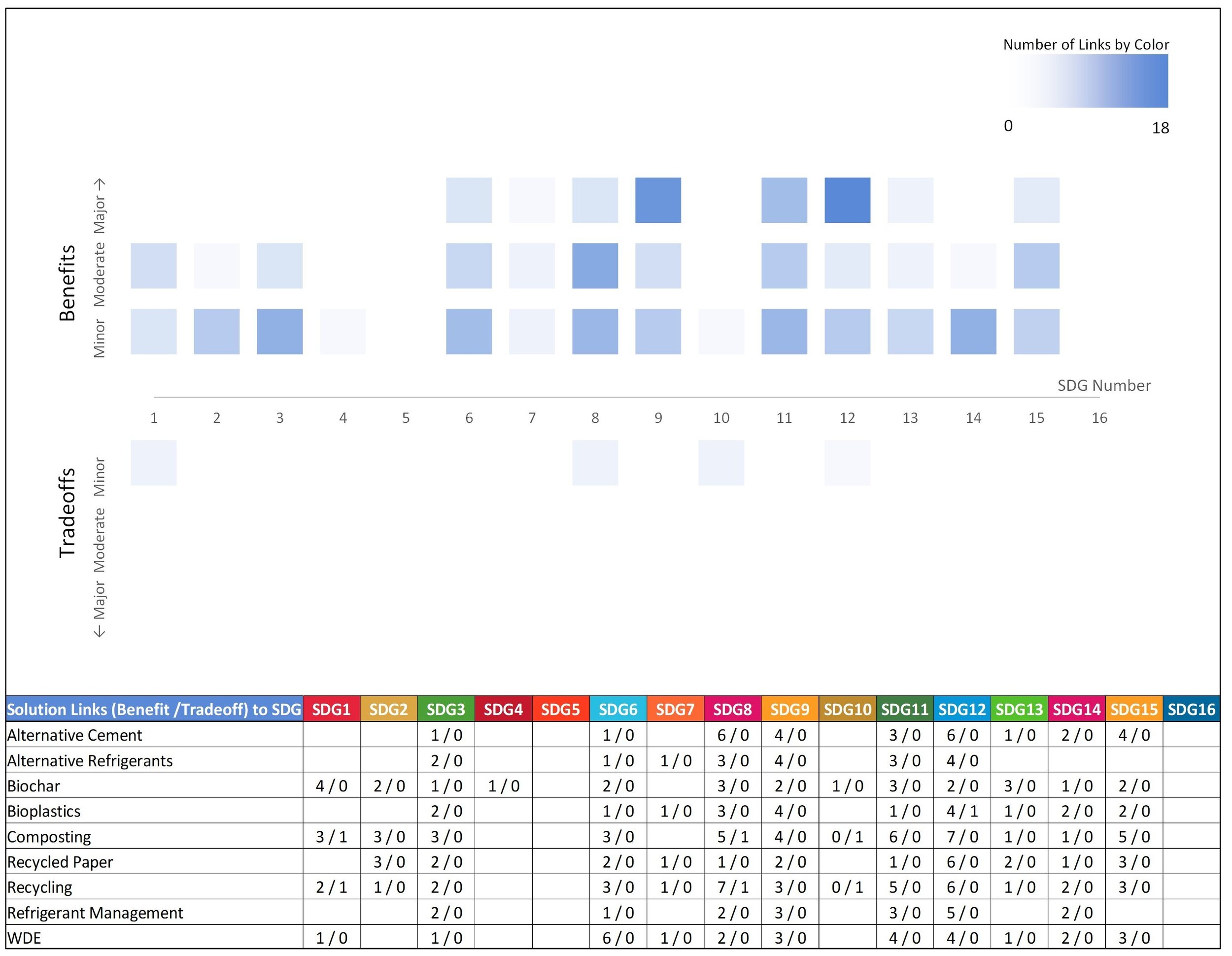Exploring informed, holistic, and regenerative solutions.

Chad’s research interests expand beyond the traditional interpretations of climate solutions and environmental conservation. With a Master of Studies in History of Art and Visual Culture from the University of Oxford and a Master of Public Policy with concentrations in International Development, Economic Analysis & Natural Resource Management from the University of California, Berkeley, Chad has an interdisciplinary research approach. Previous to his work with Project Drawdown and exploration of holistic climate solutions, Chad explored topics surrounding indigenous knowledge systems, international policy systems, resource management, and socioeconomic relations - all of which inform his current work.
Project Drawdown
Solutions-Oriented Research
My Research Approach
Project Drawdown ORIGINATED in 2014 As a living research and communications organization that assesses, maps, models, and describes the potential of the most substantive solutions to achieve drawdown by 2050.
From 2014-2022, it was a collaborative effort of over 200 researchers, policymakers, businesses, thought leaders, and organizations developing a model to enable action and implementation throughout the world. Our common mission is to do our part in solving global warming, by enabling a new, regenerative ‘business-as-usual’ that has cascading benefits to human well-being in concert with nature, while training the next generation of global citizens and thought-leaders.
My approach was to define and describe existing social, ecological, and technological solutions that reduce and sequester greenhouse gas (GHG) emissions in the atmosphere. It aims to provide a detailed, thoroughly researched description of solutions, their potential climate impact, and the financial returns they will have assuming vigorous increases in their adoption.
While there are many global systems models that evaluate possible mitigation pathways, few have a bottom-up, solutions-orientated approach. Fewer still, have a comprehensive approach by including land use solutions, arguably the only way to sequester carbon from the atmosphere with confidence. To achieve our aim in way that would be meaningful to many levels of agency, I developed an integrated systems model to evaluate solutions that could be used by decision makers at all scales.
Solutions included in the project follow three parallel mechanisms:
(1) REDUCING energy use through efficiency, material reduction, and resource productivity;
(2) REPLACING existing energy sources with low carbon renewable energy; and,
(3) BIOSEQUESTERING carbon in our soils and plants by bio-sequestering carbon through photosynthesis, promoted by innovative farming, grazing, and forest practices.
My team brought all three paths together to evaluate their collective impact over a thirty-year timeframe. Through a combination of these three mechanisms, drawdown is achievable.
Solutions are also organized according to agency and sector level, starting with what individuals can do and sequencing in order of scale:
Individuals and Households
Buildings and Facilities Owners
Businesses and Investors
Utilities and Industries
Cities and Communities
Land Managers and Farmers
Agency refers to the level of decision making at different scales. The adoption of any solution depends on individuals choosing to invest their resources into different technologies and practices. Whether an individual home-owner deciding on installing a solar water heater, a commercial building owner weighing the costs and benefits of a green roof, an investor providing capital for wind power, a city planner justifying expanding public transportation options, or a farmer deciding what to plant this season – the aim of this research is to represent relevant solutions to all sectors of society.
Sectors are determined based on common markets, variables, and interaction effects. Project Drawdown currently evaluates the following seven sectors:
Built Environment
Electricity Generation
Food Systems
Land Management
Materials and Waste
Transportation
Women and Girls
Information gathered, and data collected are used to develop solution-specific models that evaluate the potential financial and emission-reduction impacts of each solution when adopted globally from 2020 to 2050. Models compare a Reference Scenario, with 1) a Plausible scenario assuming a realistically vigorous global adoption path; 2) a Drawdown Scenario in which adoption is optimized to achieve drawdown by 2050; and 3) an Optimum Scenario in which solutions achieve their maximum potential, fully replacing conventional technologies and practices within a limited, competitive market. In doing so, the results reflect the full impact of the solution, i.e. the total 30-year impact of adoption when scaled beyond the solution’s current status.
All solution-specific models are combined through integration models within and across sectors, ensuring that interaction effects, double counting, and reasonable rebound effects are accounted for. Results show the combined cumulative and year-by-year impacts of solutions under the three scenarios to determine if and when drawdown is possible.
Our first set of results…
There is no such thing as a small solution. The top technologies and practices will take us far down the pathway towards drawdown, but accelerating implementation of all 80 solutions is required to start reversing global warming.
Drawdown’s 80 existing solutions can achieve drawdown, the point when atmospheric concentrations of greenhouse gases begin to decline by 2070 in the Plausible Scenario, 2050 in the Drawdown Scenario, and 2045 in the Optimum Scenario.
Rankings of different solutions can shift depending on how fast and how ambitious we are. impleent solutions. Learn more about the different scenarios at www.drawdown.org.
Current Research
Drawdown’s System of Solutions
ACHIEVING THE UN GLOBAL GOALS
"The results of this review and mapping of the Drawdown solutions to the SDG Framework show: (1) that the fulfillment of SDG17 through the creation of long-lasting, collaborative partnerships across scales and levels of agency are imperative to implementing all Drawdown solutions and sectors; and (2) that all existing solutions, when implemented as a “system of solutions,” can contribute in direct and indirect ways to achieving all the SDGs." (Frischmann et al., 2020)
New paper published linking Drawdown's 'system of solutions' to the United Nations Global Goals.
The 17 United Nations’ Sustainable Development Goals (SDG) provide a framework for addressing the most pressing global challenges by 2030 and setting the stage for a sustainable future for humanity and the planet. To-date, progress on actually achieving the SDGs has stalled, in part due to the lack of clearly defined solutions that can be readily implemented at the scale required.
In a new paper published by Springer Nature, Project Drawdown’s research team mapped all of the technologies and practices Project Drawdown identifies as global climate solutions to each of the SDGs and their respective targets. “All of the Drawdown solutions have direct and indirect links to one or more of the SDGs,” says lead author Chad Frischmann. “Implementing solutions to stop global warming turns out to have multiple co-benefits that help alleviate poverty, improve human and planetary health, eliminate hunger, reduce inequalities, promote gender equality, etc.”
According to Frischmann et al., these co-benefits, and the SDGs themselves, can be achieved more urgently, safely, and equitably when solutions are implemented in parallel as a ‘system of solutions’ rooted in social justice and inclusion. “The system needs to shift from one that provides well-being for a few, to one that offers well-being for all.” This can happen, continues Frischmann, “only when we link arms through collaborative partnerships at all scales, from local to international, and across levels of agency to implement solutions. We need distributed networks that include businesses, policymakers, civil society organizations, investors, educators, and communities working together for our collective well-being.” The authors argue that such multistakeholder partnerships are a prerequisite for accelerating Drawdown’s ‘system of solutions’, which, in turn, provides a concrete mechanism for helping to achieve all the SDGs. Hence, achieving SDG17 ‘Partnerships for the Goals’, the paper concludes, is the lynchpin to creating the sustainable future we want.
Link to paper: https://link.springer.com/referenceworkentry/10.1007/978-3-319-71067-9_100-1
Contact: Chad Frischmann, VP & Research Director, Project Drawdown chad@drawdown.org
Author(s): Chad Frischmann, Mamta Mehra, Ryan Allard, Kevin Bayuk, João Pedro Gouveia, Miranda R. Gorman
“The system needs to shift from one that provides well-being for a few, to one that offers well-being for all.”











